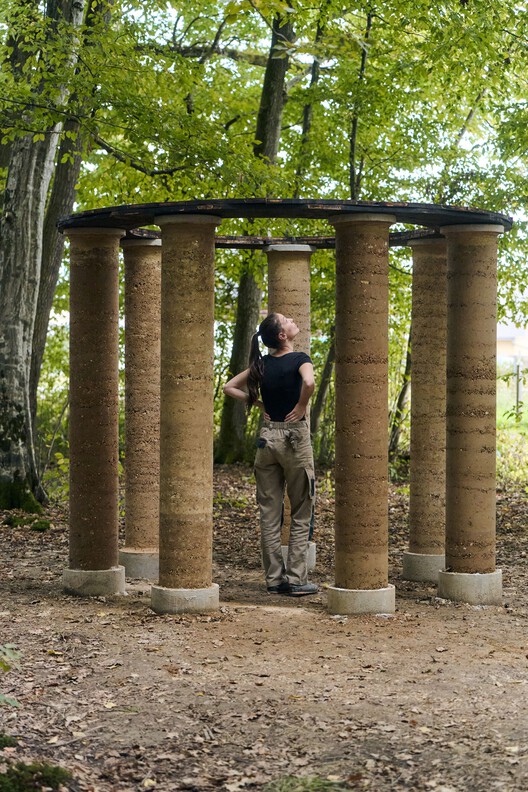
-
Architects: Z.O.P. - Institute for Spatial Design
- Area: 50 m²
- Year: 2023
-
Photographs:Jana Jocif
-
Lead Architects: Matevz Granda

Text description provided by the architects. Z.O.P. - Institute for Spatial Design, which publishes Outsider, Slovenia's leading architectural magazine since 2015, has been promoting sustainable building practices, including earth construction. In 2018, they invited Martin Rauch, an expert in rammed earth construction, to Ljubljana for a lecture. Inspired by his call to "make your hands dirty," Z.O.P.'s team, comprising architects, sociologists, and landscape architects, began hands-on experimentation with local materials in rural Slovenia. This collaborative approach has since brought together architects, writers, students, and the local community. Why Build with Earth? - There are several advantages to building with earth. It boasts the lowest carbon footprint of all building materials, is readily available (even as construction waste), and has excellent living properties, such as moisture regulation, heat accumulation, and the ability to bind harmful substances. These qualities make it a sustainable and healthy choice for creating affordable homes.




































